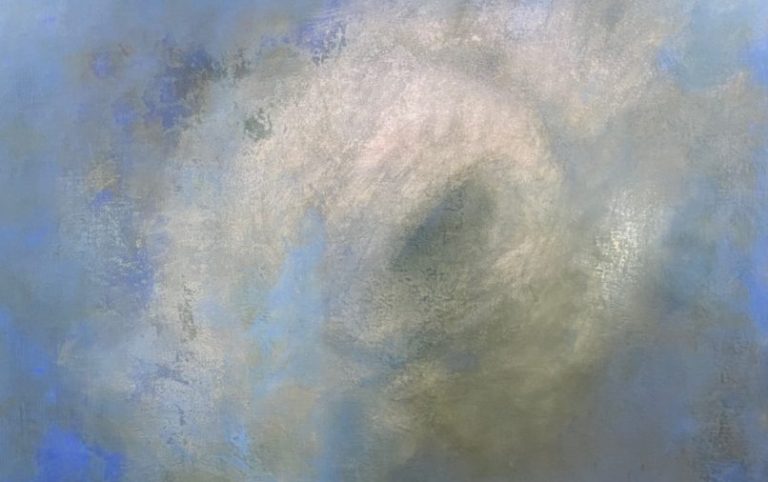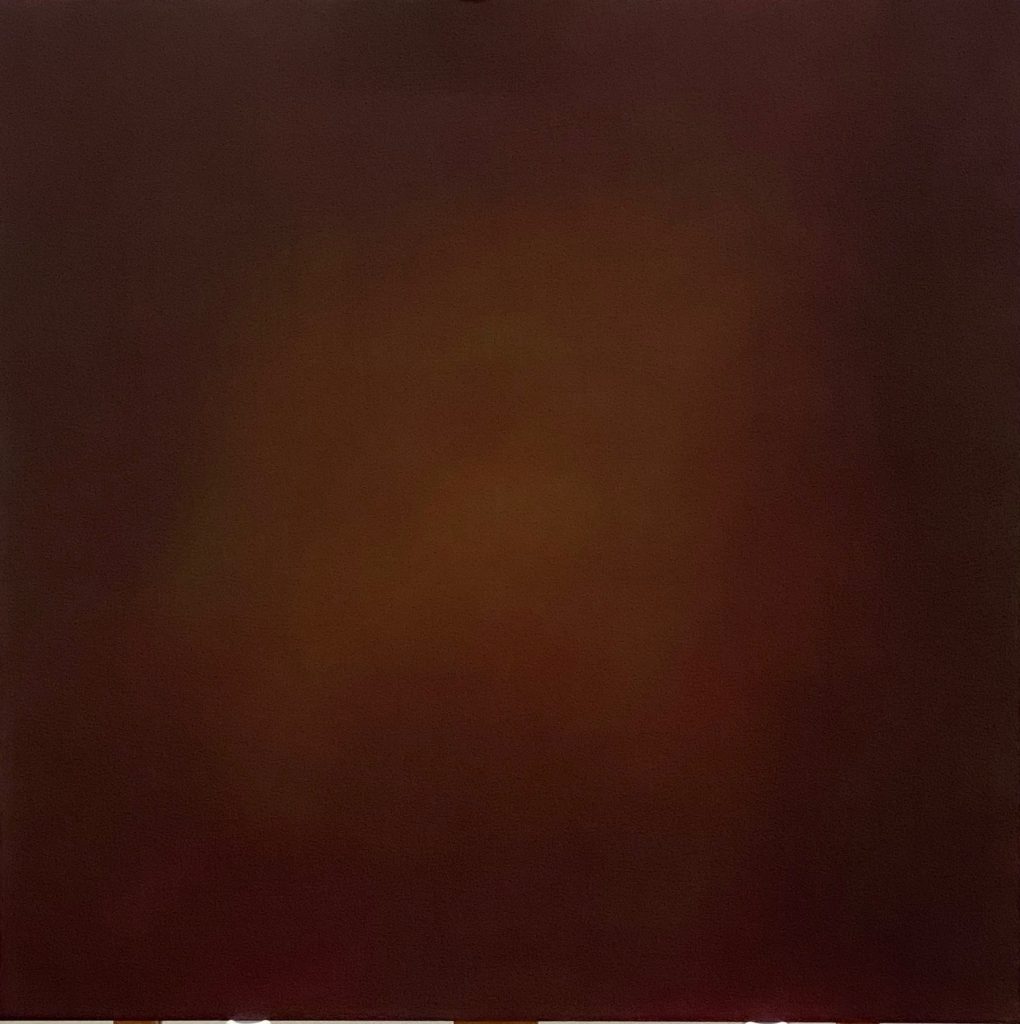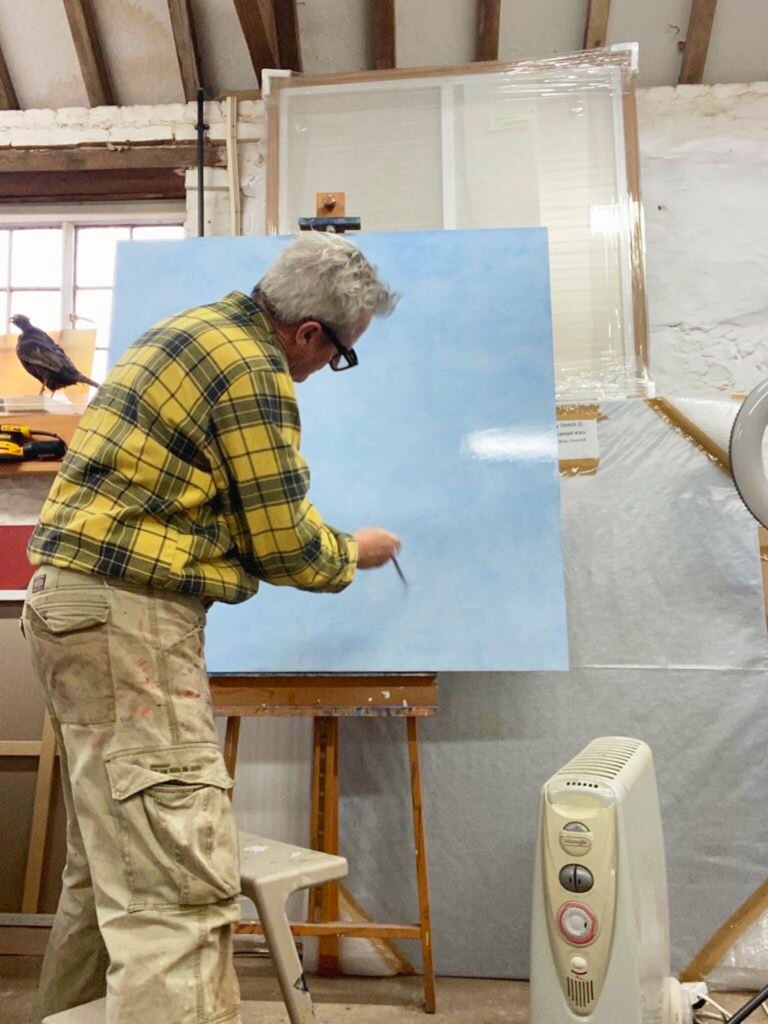Inside Scamell-Katz’s Career
Siemon Scamell-Katz is a contemporary painter working between Norfolk, UK, and Paris, France. His career path was particularly captivating; before becoming an artist, Scamell-Katz was first a specialist in human behavior.
As the founder of a company specializing in behavioral analysis, he had developed eye tracking technology with his team. This equipment, which used sensors that tracked and measured what people were looking at, allowed him to understand and analyze the way in which our eye and our brain precisely observe an object. Scamell-Katz also defined himself as a specialist in “how specialized the human brain is in interpreting icons and symbols and how those symbols are the stimulus to memory and interpretation thus of meaning.”
His artistic approach was thus born from his research on human ocular perception; noting that,
All landscape painting is interpreted through a scholarly ‘frame’ of vision.
Siemon Scamell-Katz produced a series of abstract paintings in oil and enamel on aluminum representing landscapes freed from this frame of vision and the interpretations that flow from it. He wanted the viewer, detached from any symbolism or interpretation, to be invited “to look without seeing, but to feel.” Abstraction was naturally the way that Siemon Scamell-Katz used to carry out his reflections.
As a reminder: by abstraction we mean any figuration in art, to keep only a reality reduced to the purest expression containing only the essentials of its vibrations and colors.
The First Exhibition in France
In April 2022, Siemon Scamell-Katz exhibited for the first time in the French capital. On this occasion, a gallery in the 3rd arrondissement of Paris presented 12 new abstract works by the artist to the public. These oil and enamel paintings on aluminum resulted from a long process, with the artist applying successive thin glazes to create vibrating surfaces. To realize these 12 art pieces, Siemon Scamell-Katz drew inspiration from his travels to the Greek islands of Hydra and Tinos, where he worked over the summer of 2021.
The particularity of this event was that the works could also be experienced by reading text written by Rachel Cusk, an author nominated for the Booker Prize in 2021 and the National Book Critics Circle Award in 2022, and Scamell-Katz’s wife. Both art and text were published in the book, Quarry; presenting the works of the British artist in parallel with the poetic touch of his wife.
Together, the two arts, painting and literature, tended to reach the sublime. Transporting the viewer into a post-human landscape, the art of Siemon Scamell-Katz, supported by the wonderful literary work of Rachel Cusk, invited the viewer to meditate, ponder, and awaken their senses through his marvelous landscapes.
Like Mark Rothko and Zao Wou Ki, Scamell-Katz created his own interior and timeless space, drawing the public into a whirlwind of colors. It was on these colors that the movement and vitality of this space were based, where the concrete and the figurative no longer had their place. Rachel Cusk’s words responded to the painter’s brushstrokes to better guide the viewer’s gaze and perception.
The works of Siemon Scamell-Katz and Rachel Cusk, gathered in the pop-up gallery on rue Saint-Gilles, invited us to stimulate our senses, to dream, and to dive into this abstract, poetic and colorful universe.














